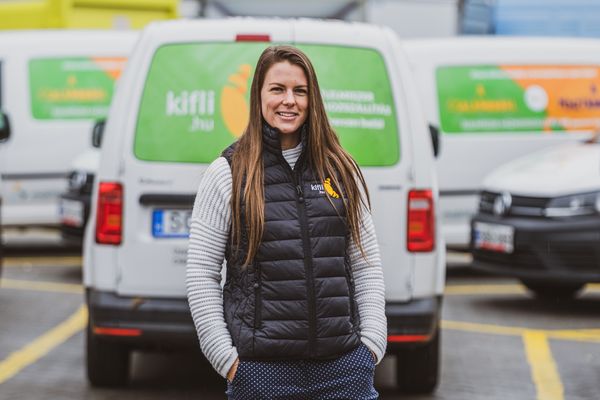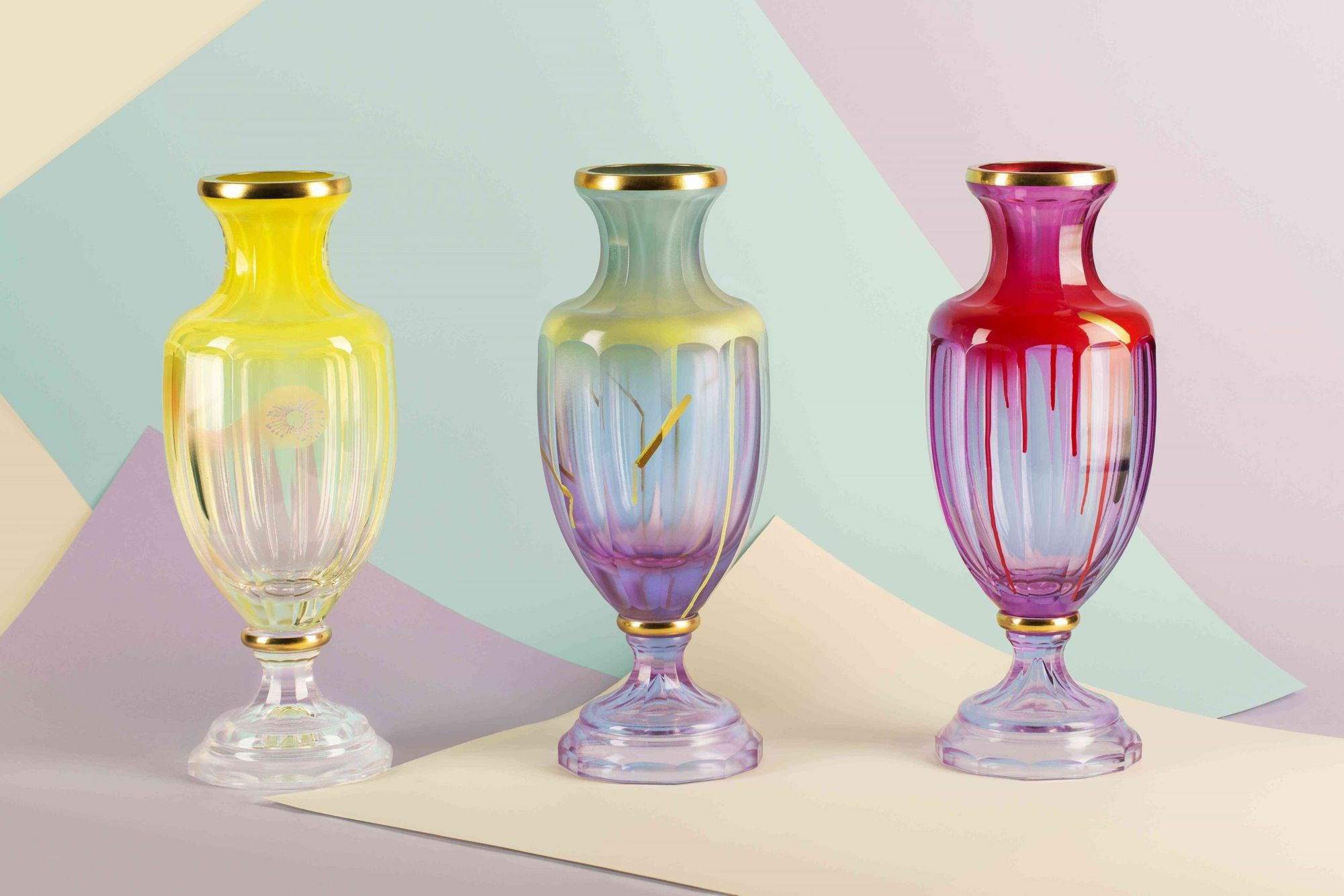František Jungvirt is one of the most intriguing names on the Czech contemporary design scene. The young designer breathes new life into traditional glassmaking methods, aesthetically transforming craft heritage to mark a new stage of history. He is also experienced in creating site-specific artworks, putting the space in motion by the continuous dialogue of carefully assorted pieces. Now we are investigating how he illuminates ancient treasures of the past, celebrating eternal shapes and patterns with great enthusiasm of our times.
Written by Melinda Farkasdy
Why is Czech glassmaking so cutting-edge to the present day? Well, it is a rhetorical question but the respect of tradition probably plays a key role. The ancient methods descend from father to son as in case of František Jungvirt. The 24-year old talent was born to a skilled craft maker family: his father is a joiner, his grandfather engraved glass at Wimperk glass manufactory for several years. He received the love of nature from his beloved grandma, whose name was – how symbolic – Růženka (Rose). No wonder Jungvirt feels great affection for glass, this ’exceptional material full of possibilities’, so as the miraculous elements of nature. At high school, he specialised in glass painting and currently he is leading his Master studies at the Academy of Arts, Architecture & Design in Prague (UMPRUM), under the guidance of the recognized professor, Rony Plesl. Although being a student, Jungvirt has already gained experience in different fields of his profession. It is enough to take a quick look at his website to be amazed by the long list of internships, awards and design weeks.
A couple of years ago the designer participated in a Japanese internship programme at Kagawa University. He was fascinated by the ’intentional imperfection’ of glass pieces, recalling the journey as a memorable stay which deeply influenced his artistic approach. Among others, he acquired the calligraphy technique, realizing the endless expressivity of surface decoration.
However, Jungvirt never paints motifs spontaneously, as every tiny detail has its place in his glass universe. The admirable ornaments and the consciously applied colours are in good harmony with the pure forms and simple lines. He usually spends entire weeks to find the best shape or the most balanced proportions, while experiments how colours deliver various emotions. In his words: ’Working with glass never leaves you cold.’ It is not only about mindfulness and discipline but also about a constant desire for innovation. We might highlight this statement since glass is often considered something out-of-fashion: fragile figurines and useless vases in a dusty display cabinet. On the contrary, a glass designer has to follow contemporary trends and practices, investigating what is happening on the international scene. To demonstrate how multiple profession it is, we shall list the wide range of activities Jungvirt pursues. He designs everyday objects as well as limited series for luxury brands. He also works for the famous Glassimo art gallery, located in the heart of Prague city centre. Glassimo proudly collaborates with upcoming designers, offering them the opportunity to present and sell their artefacts along with great masters.
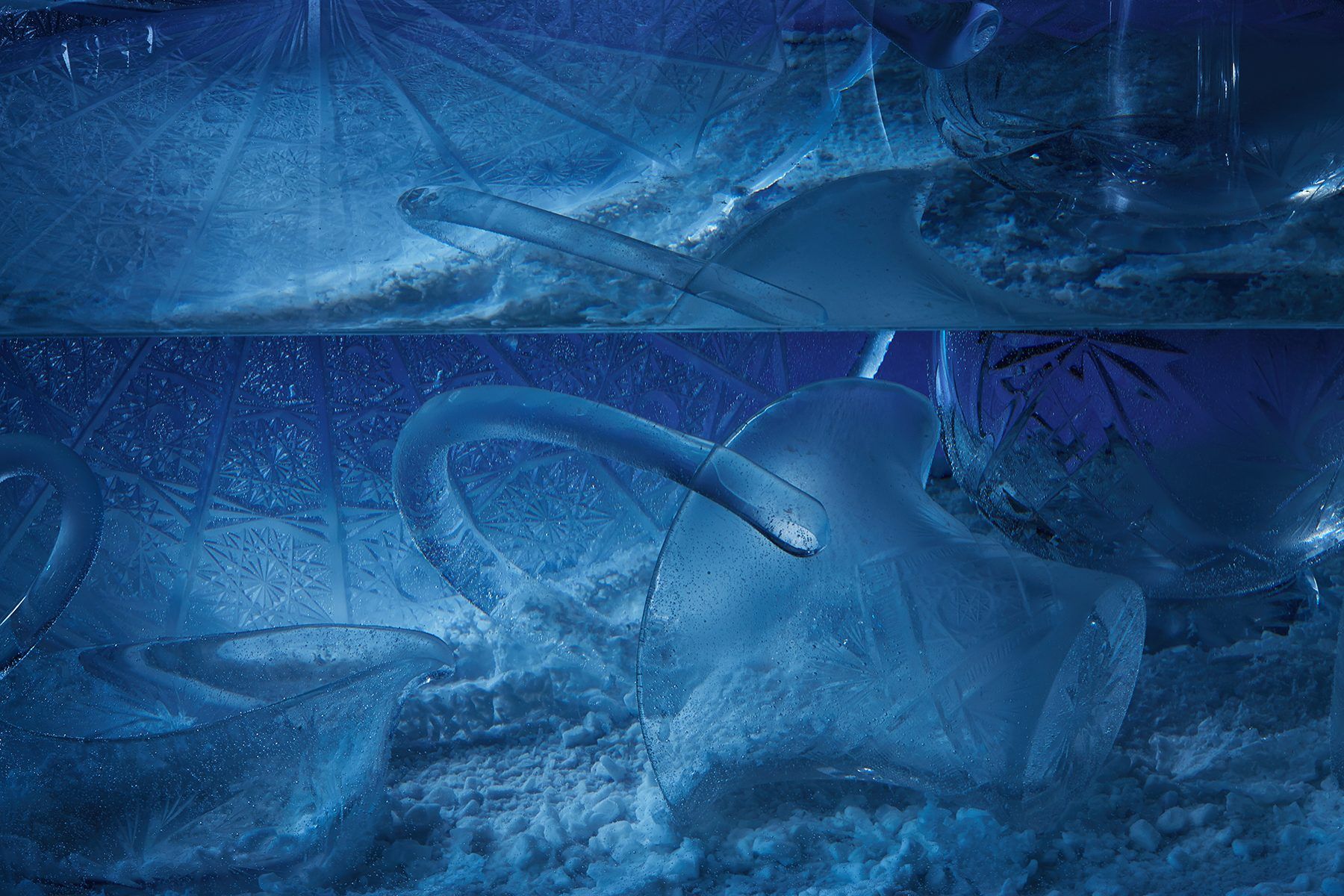
It takes us back to the respect of tradition we brood over above. The young designer is keen on to get inspiration from old craftsmanship techniques, ’striving for new impulses and a visual shift of objects beyond the glass sphere’. In case of the Forgotten Glass Treasures project, debuted two years ago at Bologna Design Week,he referred to the nostalgic items familiar from our grandparents’ home. The installation is made of crystal, on which we find engraved and painted animal encompassed by enamelled flowers. Jungvirt also incorporated traditional decorative methods in The Memory of Memories limited edition. These personal coffers were blown at the world-famous Rückl company. The artist calls them ’treasure boxes’, in the belief that the ritual pieces have the power to restore time. They were created with classical royal grinding, that means each piece is hand-cut and polished on stone.
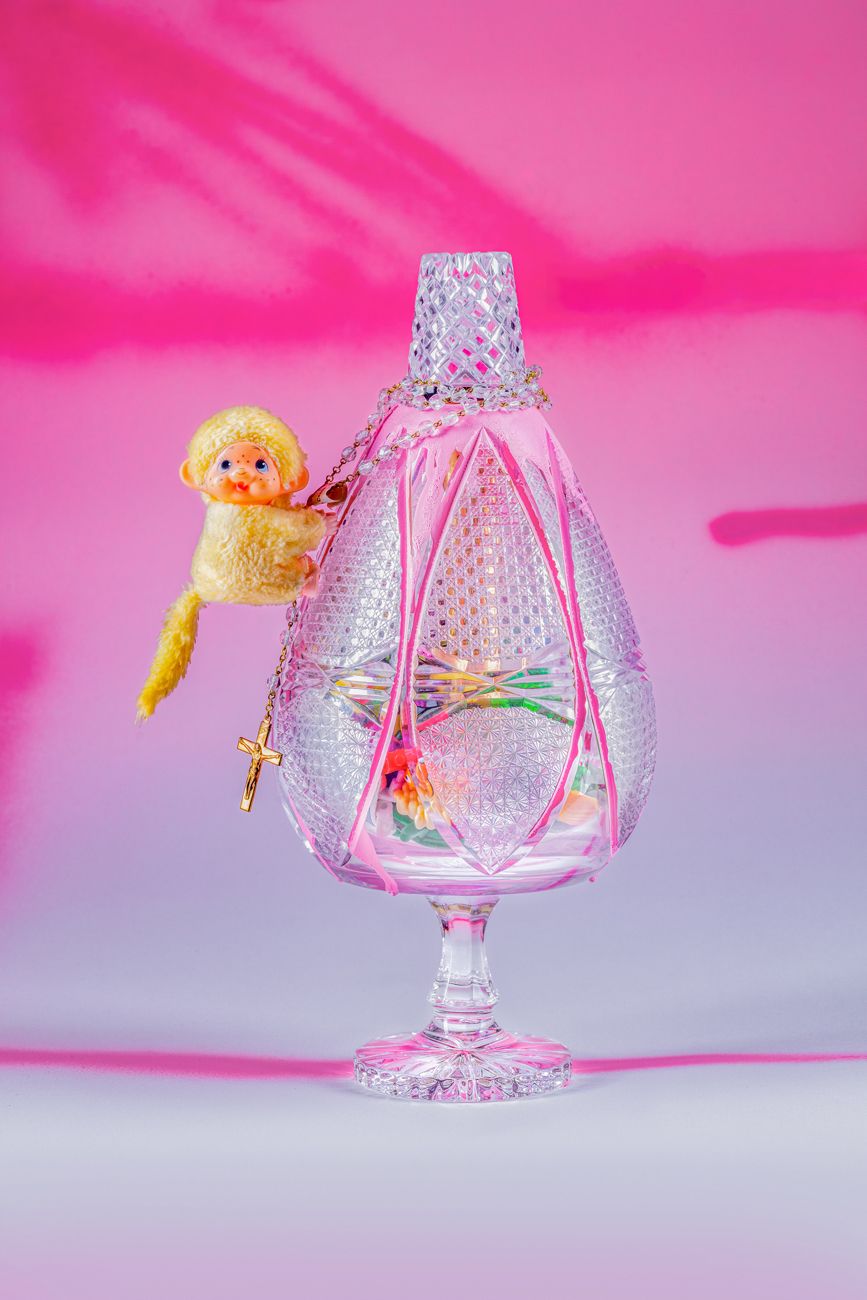
When designing objects for a special space or commissioned by a brand, he also immerses himself in the company’s history and heritage to understand what is the secret of its success. By merging different styles he created interesting contrasts for the cosy interior of Café Louvre or the elegant showroom of Leo Macenauer men’s tailor (both in Prague). These projects required a very intuitive attitude and a flexible design process, as ’the thoughtless placement of objects would have lost their spirit of fullness in the space’.

As an adventurous glassmaker, he was always charmed by the excellent craftsmanship of Moser manufactory for which he created the amazing Merano Pop vases, the Merano Pop Rallye Lights and the Birth of the Future Behind Glass installations. Merano Pop and the
Birth of the Future Behind Glass debuted at London Design Fair in 2018, while the Merano Pop Rallye Lights was displayed at Milan Design Week a year later. Jungvirt approached the collaborations with great admiration and respect since Moser is one of the most representative Czech glass brands. As for Merano Pop,he used the Moser crystal colour range and underlay technique and for Merano Pop Rallye Lights, he redesigned the company’s Merano crystal vases with UV rays, enabling them to fluoresce at night.
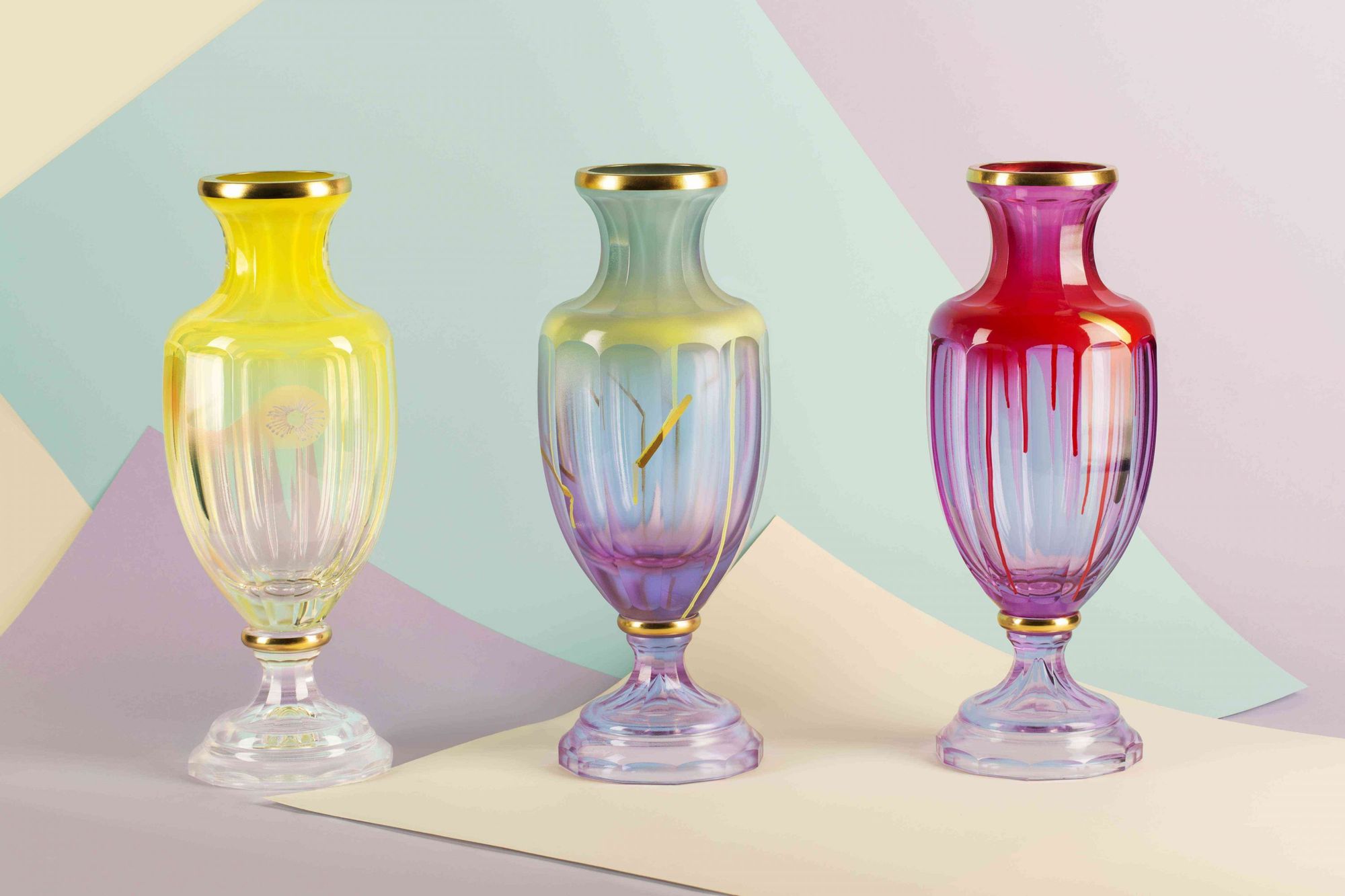

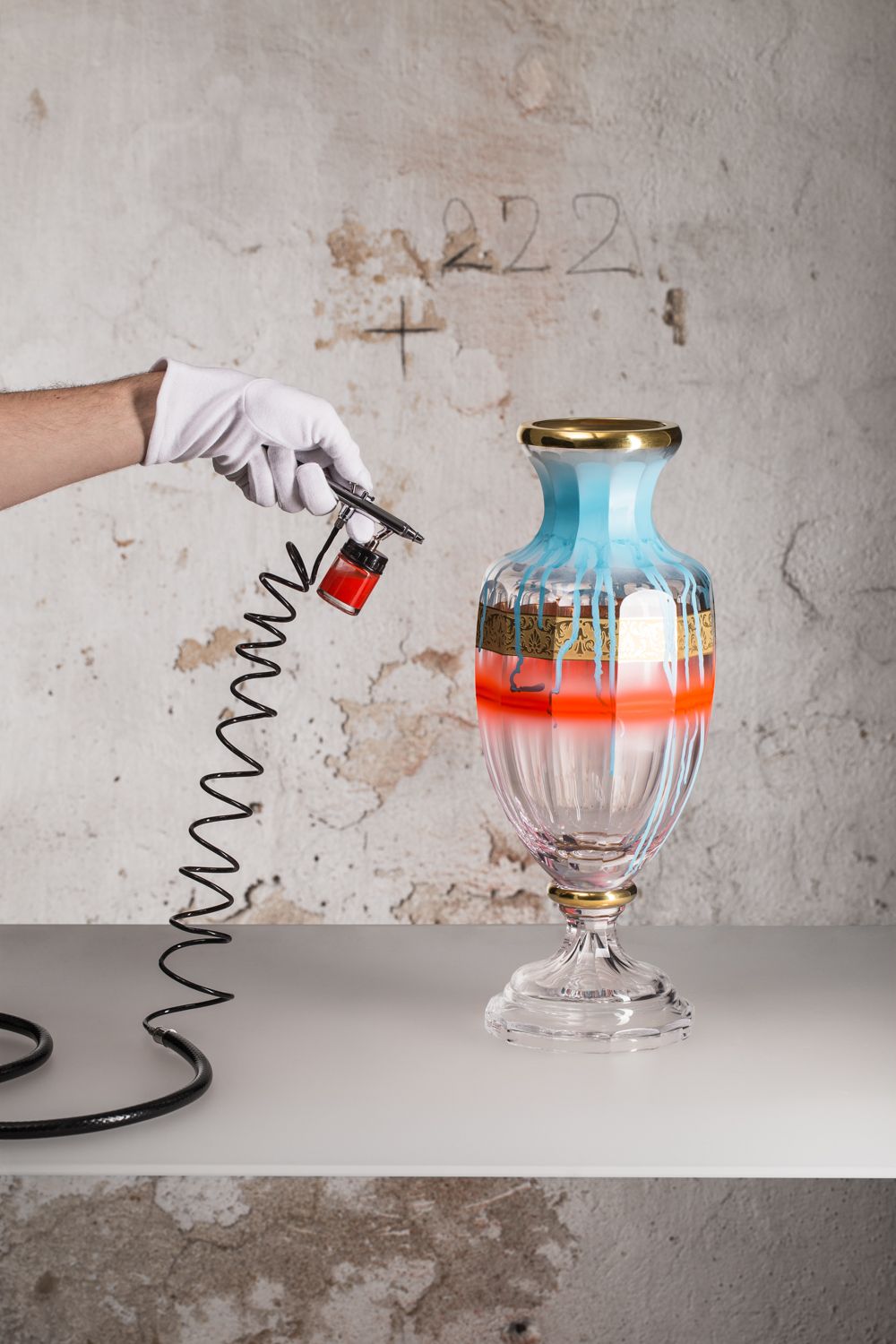
The Birth of the Future Behind Glass project was also inspired by digital technology. A programmed robot sprayed paint onto vases, combining the online, instant present with the slow crafting practices of the past. Jungvirt wanted to show the variety of time levels in one piece. The first stage, when the craftsman creates the vase, is completely influenced by human’s will, whereas the second is rather determined by the robot’s interventions. The designer contemplated the future, attempting to imagine how post-human technology will transcribe classic aesthetic categories.[1]
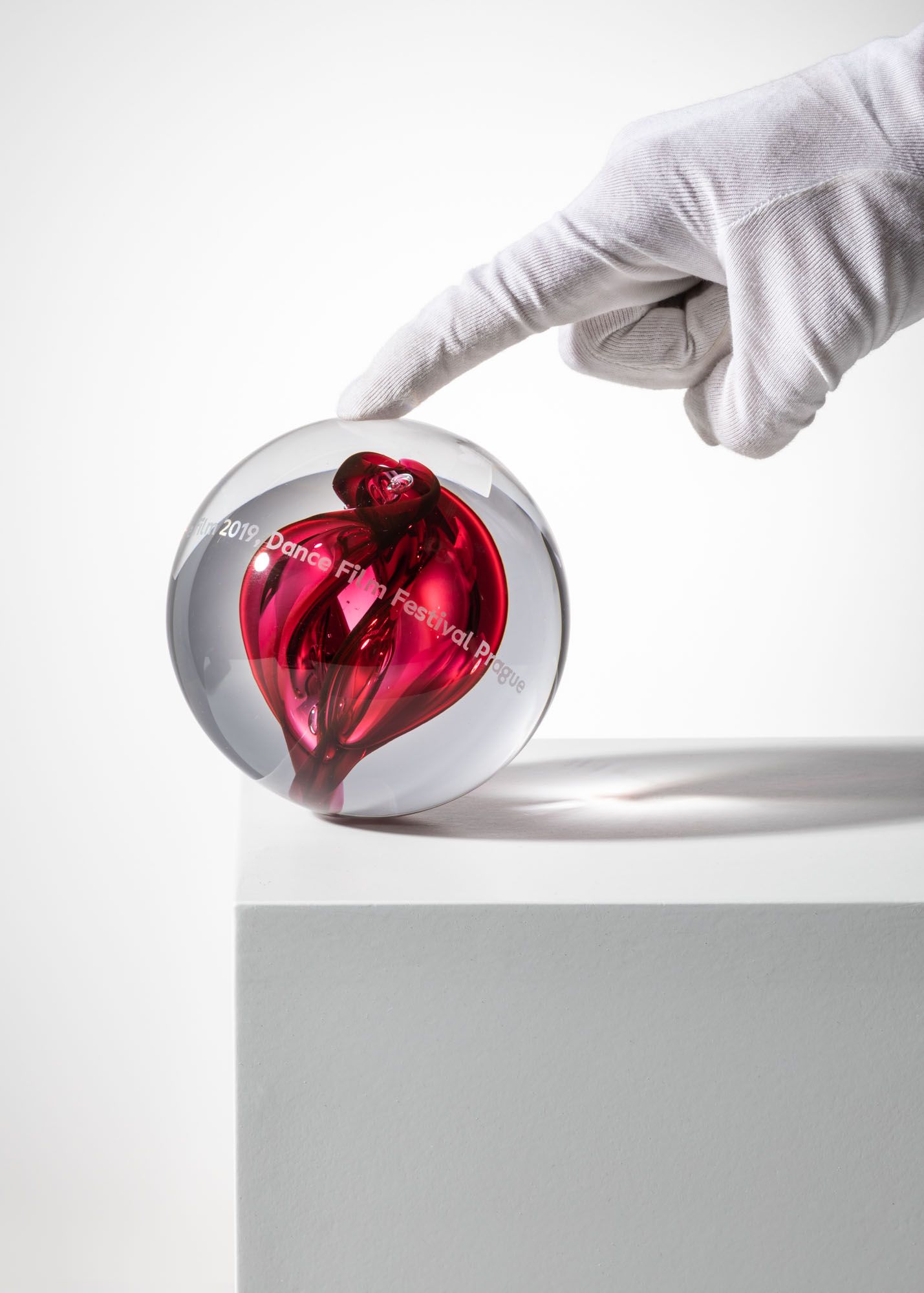
Before we present his more utilitarian objects, let’s dwell on some further artistic creations. In case of the prize ball designed for the Dance Film Festival Award and the Birth of Music projects, he dealt with glass in an undoubtedly fruitful manner.
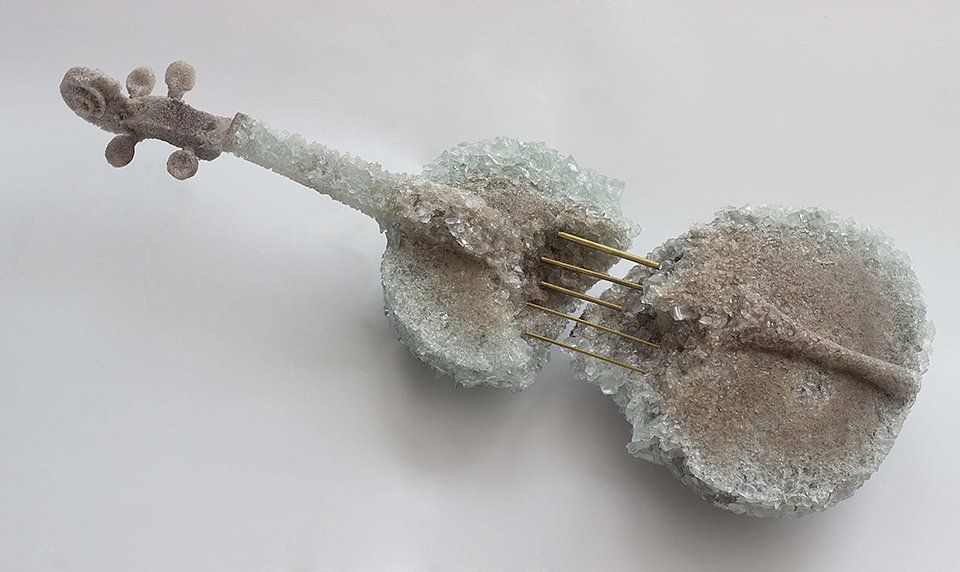
As he declares, ’dance is a kind of language, that allows us to express ourselves, it purifies the soul’. He envisioned an unbound form in constant motion, and that view found shape in a clear glass ball, blown in the well-known glass city, Nový Bor. The ball embraces a reddish core, similar to an eternal flame or a floating veil.
Whilst the Birth of the Future Behind Glass installation explored the future, a previous ’birth-project’, namely Birth of Music invoked prehistorical times. Here, Jungvirt synthesized fine art and classical music in a brilliant glass violin. The instrument itself symbolizes music and everything it relates to, the first violinist, the whole orchestra, even the dirigent.
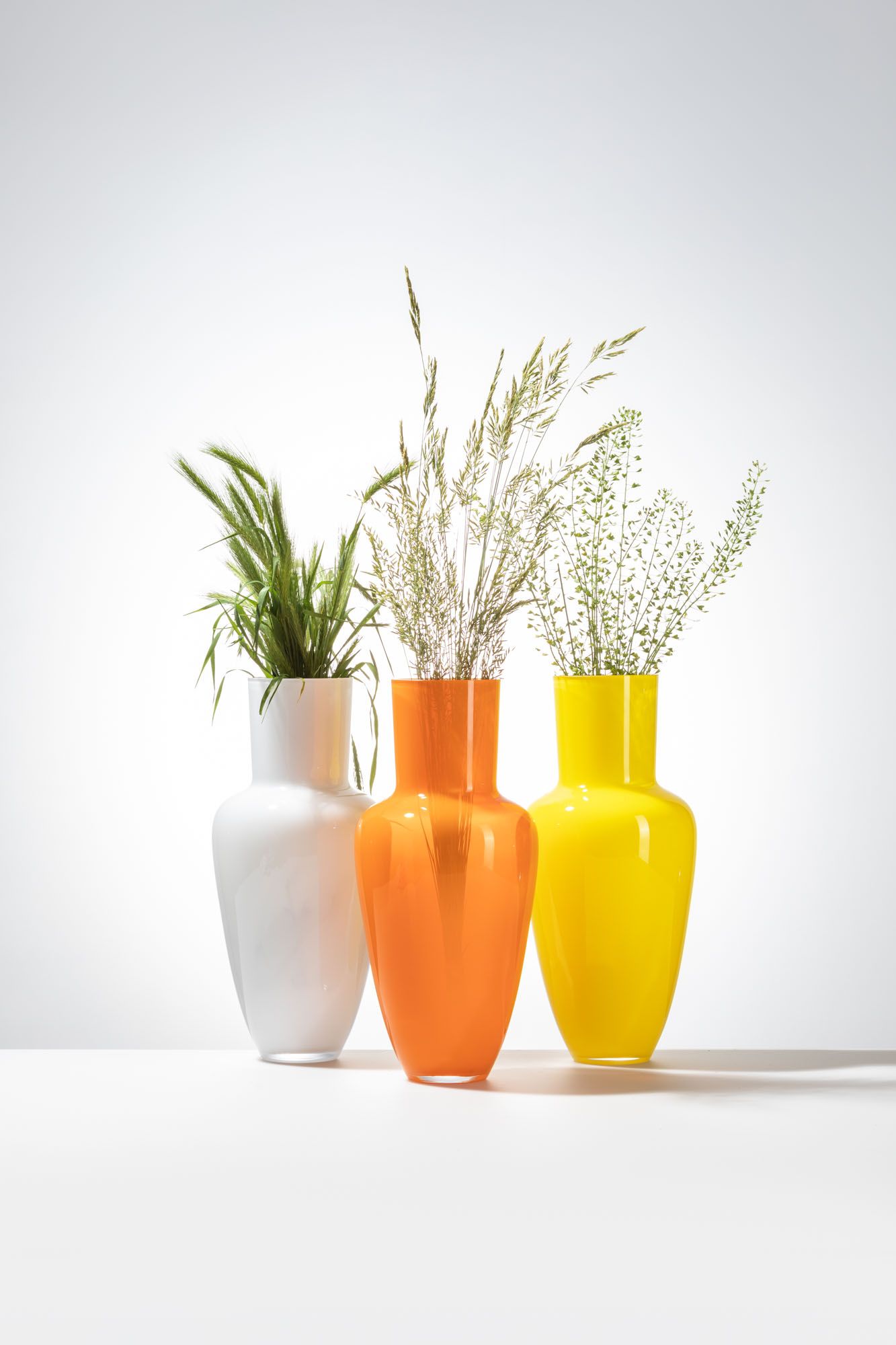
Now it is time to take a bend and offer a broader perspective about the designer’s more applied works. Thereby, we could also study his references to nature, as most items are decorated with flowers, leaves or insects. Pieces without pattern also trigger allusions about secret gardens and exotic plants, such as the Garden vases, available in several colour variations in opaque or transparent shade. We are tempted to gratify our flower creativity using these magnificent products.

A brand new project, just realized last year, is a limited series of hand-blown gin bottles designed for a restaurant association, Jíme Jih. It is an edition of four unique glass bottles, in which the traditional Czech handicrafts are merged with the essence of South Bohemian herbs. The basic, time-proven silhouettes are in great symbiosis with the sensible surface decoration. Daisies, elderberries and other wildflowers appear on the Fleur Blanche and Fleur Noire vases, making our mind wander in a botanical garden. Lea vases were born in the spirit of the infinite life cycle, where the flowers produce nectar and the bees create honey.
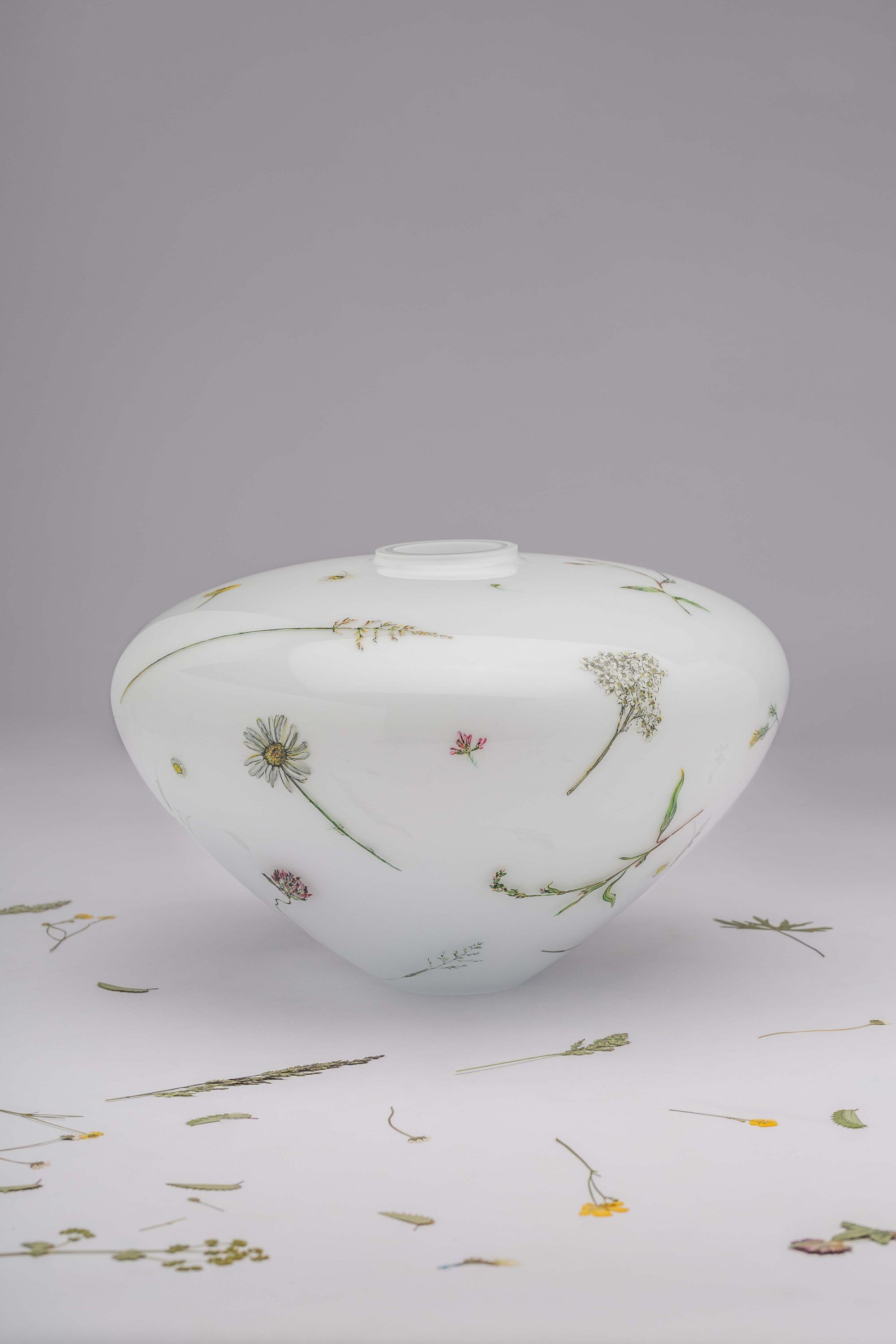
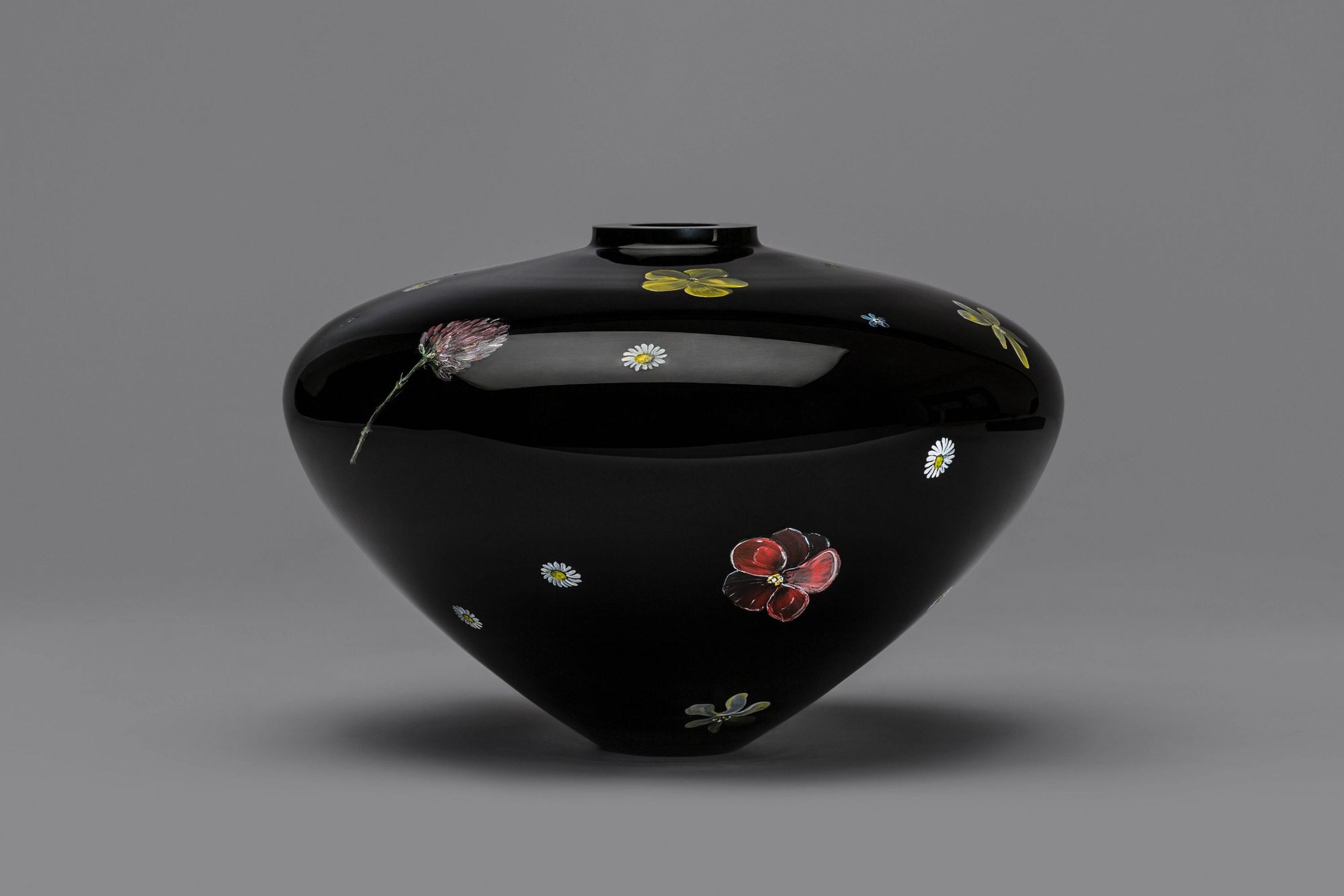
Each item shows the unconventional artistic approach, enriches traditional glassmaking practices and propagates awareness of Czech glass heritage. It is promising that several Czech museums recognized the complexity and outstanding quality of Jungvirt’s works, inserting a few of them in their collection. The designer considers having his creations in a museum requires huge responsibility as those artefacts will always remain certain imprints of their time. He does hope his brand will attract the interest towards Czech design, deserving respect, sustaining the value and cultivating the reinvestment of fine, unique craftsmanship all over the world.
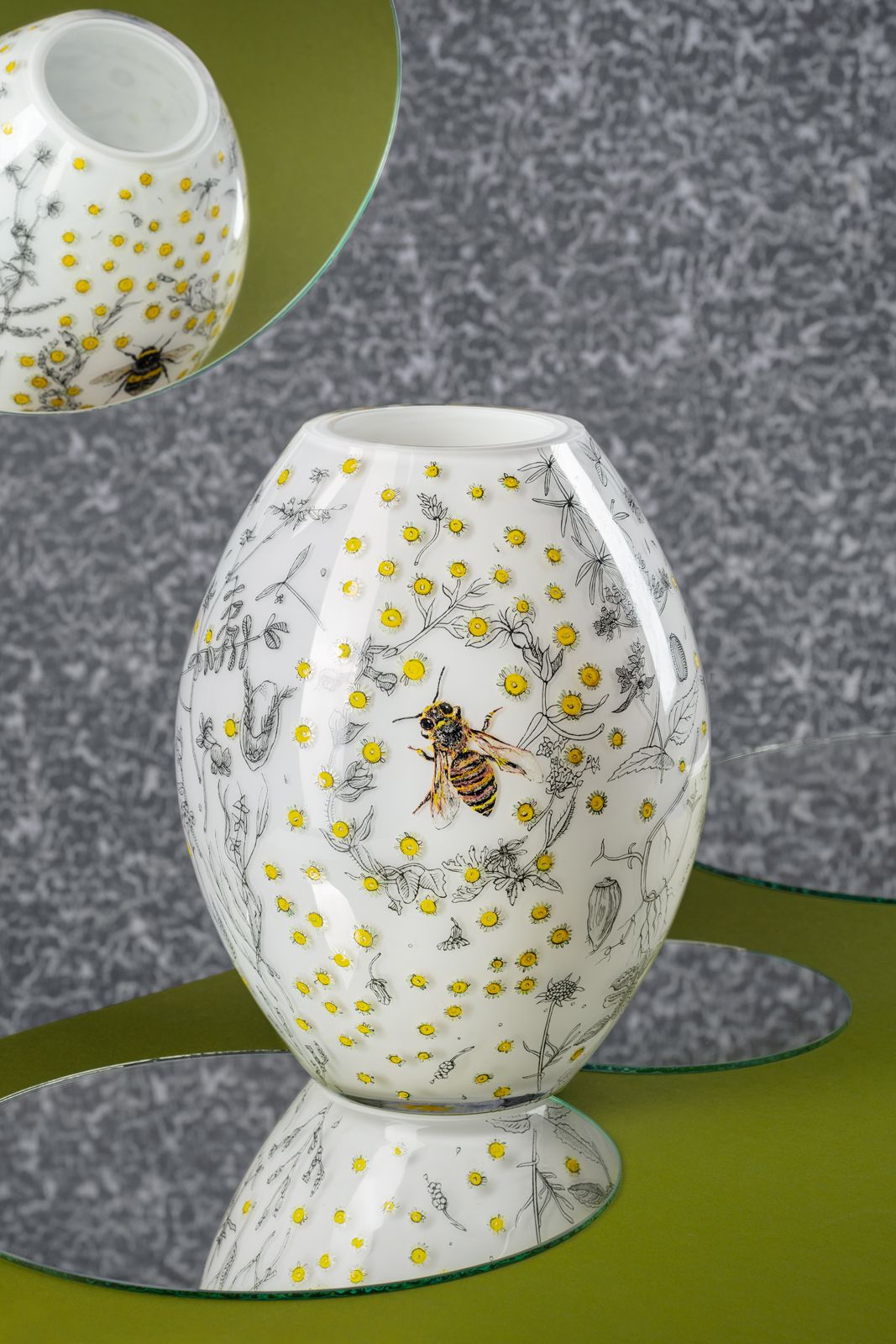
František Jungvirtis a part of the artist’s platform Michelangelo Foundation.
Források
[1] Robotic Ornaments? HUBATOVÁ-VACKOVÁ, Lada. 2019. Prague: UMPRUM Academy of Arts, Architecture and Design in Prague, pp. 50-57. Catalogue of an exhibition (Studiolo Robotico R.U.R) at Milan Design Week, Milan, 9–14 April 2019. URL: https://drive.google.com/file/d/1n-39Bcmw_94a3IWPf8fEwf0bfzXODKaa/view [Last accessed: 8 January 2021]
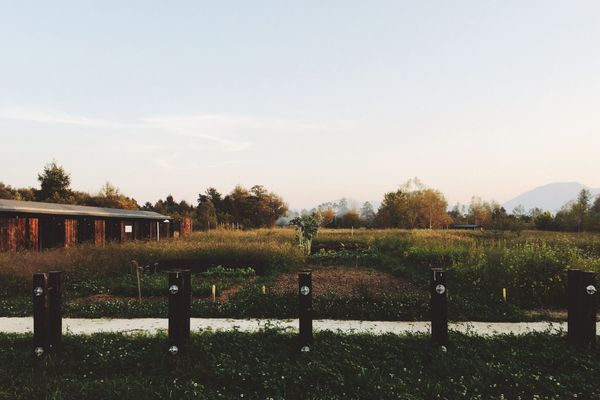
Rakova Jelša park | Ljubljana, Slovenia
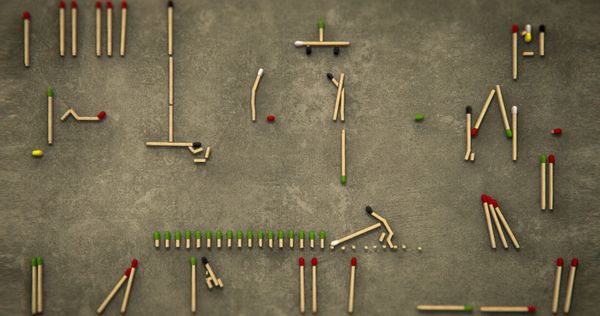
„Everyone can be the best at something” | Géza M. Tóth’s animated short film
